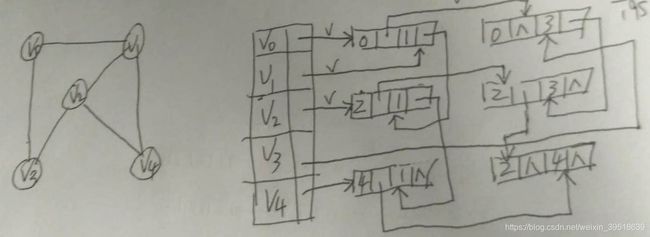数据结构-图的4种结构-邻接矩阵-邻接表-十字链表-邻接多重链表

边节点数据结构:iver,ilink,jver,jlink
创建边节点时,查找iver,jver对应下标开始最后ilink,jlink为空时,把ilink或jlink指向当前所创建的节点。
顶点的edgefrist指针为空时表示创建的边节点为该顶点的第一条边。edgefirst直接指向该节点。
structfun.h
//数据结构函数头文件
#include structfun.cpp
#includemain.cpp
#include